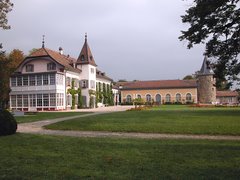 Don’t think for a second that because it’s been a week since my last blog entry that nothing worth mentioning has been going on at the Lambeth Conference. If you’ve been keeping up with the media accounts, you’ll know that’s certainly not the case. However, as someone experiencing this conference from the “inside” and who used to be a reporter, I can say some of those accounts bear rather little resemblance to what most of us are experiencing here. To further abuse an overused Mark Twain quote, rumours of the Anglican Communion’s death are greatly exaggerated.
Don’t think for a second that because it’s been a week since my last blog entry that nothing worth mentioning has been going on at the Lambeth Conference. If you’ve been keeping up with the media accounts, you’ll know that’s certainly not the case. However, as someone experiencing this conference from the “inside” and who used to be a reporter, I can say some of those accounts bear rather little resemblance to what most of us are experiencing here. To further abuse an overused Mark Twain quote, rumours of the Anglican Communion’s death are greatly exaggerated.That’s not to say there isn’t debate and, yes, disagreement among the bishops, especially over The Issue. That notwithstanding, this place is more often permeated with a real sense of Christian community, a profound believe that the Anglican Communion is a gift of God worth preserving, and a earnest desire to do what it takes to preserve it. At least that’s the vibe I’m picking up. One couldn’t help but be awed by a sense of our Communion’s catholicity in seeing the 670 bishops lined up rank on rank and row on row, in all their unity and diversity, for the official group photo (above).
The week ahead will be particularly important in the life of this conference, since the first formal engagements with the human sexuality question will begin, as well as more intensified discussions on the ecclesiology of and authority in the Communion (i.e. the Windsor Report and the proposed Anglican Covenant).
I’m afraid this is going to be a rather brief entry, and I’m rather embarrassed if folks who’d hoped this blog would be a more prolific source of “insider” Lambeth reflections are disappointed. The rapporteur job does keep us hopping, often day and night. In fact, I’ve got a report due tomorrow morning waiting for me as I type this. I suppose I should say for the record that I literally had tea with the Queen at Buckingham Palace on Thursday. Granted, it was with 1,000+ other people involved with the Lambeth Conference, as part of the mid-conference day off in London.
Perhaps just another short note to express what a privilege it is to be here. I was pinching myself the other day as I found myself in the middle of rather small seminar discussion on Anglican ecclesiology between Archbishop Rowan Williams, Greek Orthodox Metropolitan Kallistos of Diokleia, and Bishop Brian Farrell of the Pontifical Council for Promoting Christian Unity, among others.
 The person I owe for this privilege is Dame Mary Tanner (centre), a noted biblical theologian, eminent Anglican ecumenist, and just plain lovely lady. I met her at Bossey earlier this, while she was at the institute for a World Council of Churches gathering, and then again a couple of months later at another ecumenical meeting at the château. During that second encounter she asked me if I was busy during the month of July—and the rest, as they say, is history. Father Jamie Hawkey (right) is a fellow rapporteur and a newly ordained priest of the Diocese of Portsmouth in the Church of England. He’s become a fast friend and, like me, possesses an ecumenical spirit and owes his presence at Lambeth to Mary.
The person I owe for this privilege is Dame Mary Tanner (centre), a noted biblical theologian, eminent Anglican ecumenist, and just plain lovely lady. I met her at Bossey earlier this, while she was at the institute for a World Council of Churches gathering, and then again a couple of months later at another ecumenical meeting at the château. During that second encounter she asked me if I was busy during the month of July—and the rest, as they say, is history. Father Jamie Hawkey (right) is a fellow rapporteur and a newly ordained priest of the Diocese of Portsmouth in the Church of England. He’s become a fast friend and, like me, possesses an ecumenical spirit and owes his presence at Lambeth to Mary.Speaking of which, technically I’m here to write reports, not blog entries, so I’d better get back to rapporteuring. Sorry again for the few-and-far-between postings, though frequent visitors to this site will be accustomed to that. Do keep checking in, and I’ll hope to have more soon.
























